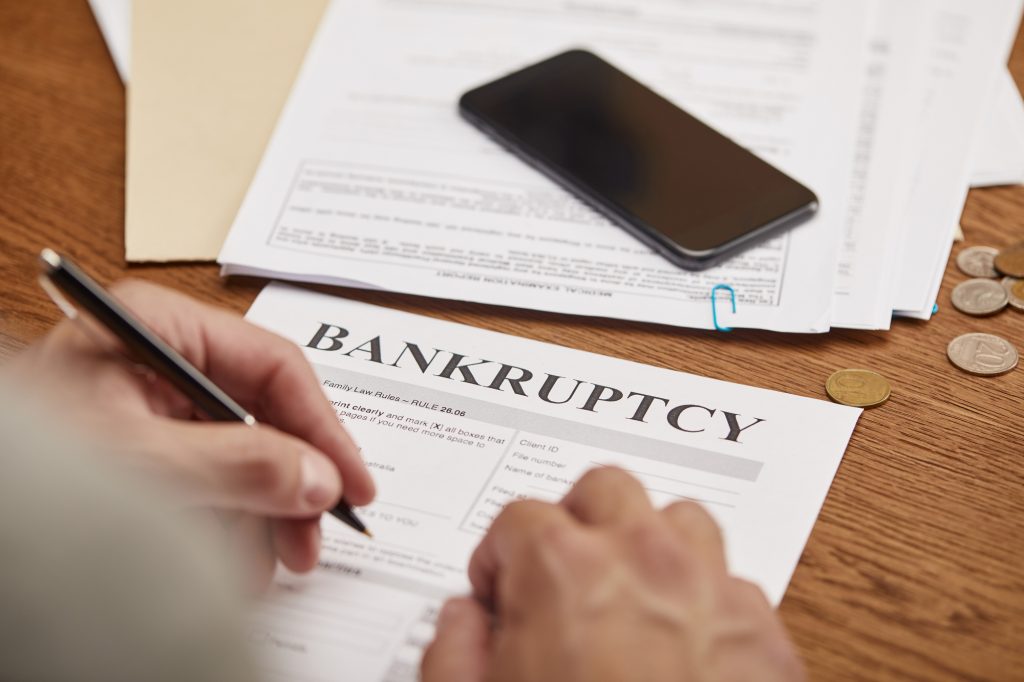
If you’re thinking about filing for bankruptcy, it’s probably not a decision you take lightly.
Bankruptcy is not an easy way to get out of paying your debts. Instead, you should view it as a means to get control of your finances and rebuild a strong foundation for yourself.
The consequences of bankruptcy can be pretty significant.
For example, bankruptcy proceedings may require that you give up your possessions and sell them to pay your creditors.
Bankruptcies also damage your credit, and they can impact your ability to get a loan for something like a house or a car well into the future.
Even if you are able to get credit from a lender in the future, you’re probably going to get a higher interest rate and less favorable terms than a borrower without bankruptcy.
After you file a Chapter 7 bankruptcy, you can expect that it will stay on your credit report for 10 years. If you file Chapter 13 bankruptcy, then it will stay on your credit report for seven years.
With a Chapter 7 bankruptcy, your trustee uses liquidated assets to pay off as much of your debt as possible, and then the rest is discharged. With a Chapter 13 bankruptcy, you have to pay everything back within three to five years based on a court-approved payment plan.
Before filing for bankruptcy, you should consider all of your alternatives, including a debt consolidation loan, help from a government-approved credit counselor, and talking with your creditors to see if they’ll work with you on a repayment plan that’s more manageable for your financial situation.
If none of these things happen and you have no other choice, after a bankruptcy, you should take the following steps to start recovering.
Understand What Happened
The most important thing you can do as you begin to rebuild your financial life after a bankruptcy is truly gain an understanding of what happened and why you found yourself in that situation.
This can be hard because it forces you to look at bad habits and mistakes you made, but this really is the only way you’re going to be able to move forward.
Without knowing where you went wrong, you’re not going to know what to improve on in the future.
Check Your Credit Reports
Looking at your credit reports for the first time after a bankruptcy can be painful, but again you need to do it. This is the only way you’ll know where you’re starting so that you can track your progress.
Look for any mistakes, too, so that you can dispute them.
After you initially check your credit, you should sign up for a monitoring service. There are free options like CreditKarma, and they will help you stay on track of your progress and also alert you of any suspicious behavior that could be affecting your credit.
Maintain Your Home and Job
If you already have a job when you file for bankruptcy, do everything you can to keep it.
If you don’t have one already, then you need to find steady employment.
This will help to rebuild your credit and show you’re reliable. You should work to have a stable home too, whether you own it or it’s a rental.
Create a Budget
When you have a budget, it helps you truly know what’s coming in versus what’s going out. In order to rebuild your finances and also avoid making the same mistakes, you need to have a budget.
You need to start by including all of your income sources. From there, list your expenses and start to see where you can trim things.
Don’t be too rigid in your budget because that might make it impossible to stick to, and then it’s pointless.
Start Using a Secured Credit Card
A secured credit card is likely going to be one of the first things you begin utilizing after a bankruptcy to rebuild your credit.
A secured credit card is one that you can easily get approved for in most cases, even with bad credit.
The reason you can be approved is that the card is backed by a cash deposit you make. The deposit usually equals your credit limit.
If you deposit $300, then you can spend up to $300 with your card.
Eventually, if you pay your bill on time, you can raise your credit score enough to get an unsecured card.
An unsecured card may be an option if you have bad credit, but if it is, you can count on paying high fees to use it.
Either way, having a credit card, using it responsibly and paying on time are going to help you reestablish your credit.
As a note, a secured card might sound like a prepaid credit card, but there are differences.
With a prepaid card, you’re not getting the advantage of having it reported to credit bureaus.
Ideally, to make the most use of a secured card, you should only make one or two small purchases a month with it so that you don’t spend more than you should.
Then, each month, pay your balance in full. This helps you avoid paying any interest.
A secured card can start to improve your credit within about a year.
Aside from making one to two small purchases on your secured card a month, use only cash when you can.
Add Other Accounts to Your Credit
There are certain ways you can add things like your rent and utility payments to your credit report. For example, Experian offers Experian Boost. This lets you add your utility and phone bills in your report, and if you make them on time, then it helps improve your credit score.
Finally, be patient with the process and yourself. The impact of bankruptcy can be difficult at first, but if you’re diligent you can dig yourself out of it and re-establish your credit score. Take your time and look at it as a process.
